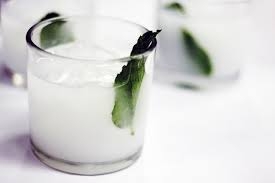|
|||
|
|
|||
|
|
|||

Arak is a traditional alcoholic drink of the Middle Eastern countries; it is pure and colorless with a strong taste and a relative of the alcoholic drinks made from anise. Its color changes when mixed with other liquids. Its percentage of alcohol ranges between 40-63% and it is extracted from vine with the addition of anise. Preparation: The process of distillation of grapes for the manufacture of alcohol \"Arak\" is an ancient traditional process which has its roots in the east, especially in the countries which overlook the Mediterranean basin and produce the kind of grapes suitable for making Arak.The process starts with the vine. The quality of the used grapes is the key of making good Arak. The grapes have to be ripe enough and mostly of a golden color. Instead of being manly irrigated, it is preferable to be naturally watered by rain. The most important kind of grapes that is used in manufacturing Arak is the Obeidi grapes and white grapes which are grown in Syrian and Lebanon. Grape is harvested in late September and early October, where it is pressed and put in barrels to be soaked in its own juice and left to be fermented for three weeks where the grapes fizzle during the first five days and then calm and their peels and seeds float on the surface. Sometimes, the mixture is stirred for the emission of CO2. To make sure that it is well-fermented, the mixture is tasted by touching it by hand; if the content\'s temperature is cold that means the process is well applied. After that comes the distillation process which is done through a special machine. Arak is usually distilled twice; the first time is the ordinary distillation without any additions, where the distilled result of grapes is put in a container with the addition of water and some coal in the bottom to absorb any undesirable odors. The product of the first distillation process is called “soma” in the local language. Then the product is moved into another container awaiting the second distillation process. During the second distillation process, anise is added and mixed with alcohol. Usually the percentage of the alcohol differs with the addition of anise. This is one of the factors affecting the final quality of the product. The container is put on an very light fire enough to cause evaporation. During this process, about a gallon of undesirable alcohol is emitted during evaporation which contains ethylene alcohol which is very dangerous; turbid water also starts to come out. Sometimes, onions, potatoes, apples, sugar, figs, peaches, wheat…etc are added to make the drink smoother and to add some sweetness. Without those additions the taste will be strong and pungent. Usually a third distillation process is carried out to raise the percentage of alcohol. At this level, the fire is strengthened, but not directly under the container rather through coal that is 50 cm away from the container in order to prevent the taste of burning from leaking into the drink. After the process of distillation of Arak is done, Arak is filled in big bottles which were in ancient times made of clay to allow evaporation. The vaporized amount is called \"angel’s share”. Currently, Arak is filled in glass bottles because it is affected by the material surrounding it; it absorbs the color and taste. Thus, it is preferable to use big glass bottles called “caned” -in local language- which have the capacity of approximately 7 liters and are surrounded by cannabis bags to prevent light from entering, and then they are covered in order not to let the air in. Then they are left to age in natural environment and temperature. The Arak will be drinkable in a week, but the older it gets the better it tastes. Places of Arak Production: Several countries that overlook the Mediterranean are famous for producing distilled Arak like Syria, Lebanon, Jordan and Iraq as well as European countries. Its most important international types are: Raki, a Turkish drink Ouzo, a Greek drink Mastika, in Bulgaria Pastis, in France Absinthe, in several regions in Europe Sambuca, in Italy Dates Arak in Sudan Raisin Arak in Egypt In our country today, there are several factories for Arak production. Arak is also domestically manufactured as a hobby; the purpose is not commercial but for fun and spending time with friends where all of them gather for long hours around the container to distill Arak. The manufacture of Arak is considered as one of the ancient heritage and one of the traditions and habits of our societies, and it needs a lot of excellence and knowledge. Concerning the anise added to Arak, it is preferable to use Syrian anise which is considered one of the finest types worldwide; its most famous type is grown in Saasaa area in the south of Damascus city. How to Drink Arak: Arak is usually mixed with water in a jar called tankard, and then it is filled in small goblets. This dilution turns Arak from a colorless liquid into a white liquid because the ethanol, the main oil of anise, is dissolvable in alcohol but not in water. As for ice, it is better to add it after mixing Arak with water, because if it was added directly prior to the addition of water, it would cause unpleasant blotches of oil to appear on the surface; that’s because ice attracts oil on its surface. Therefore, Arak is mixed with water and filled in goblets with the addition of ice after that. Often, Arak is served with many dishes of appetizers. |